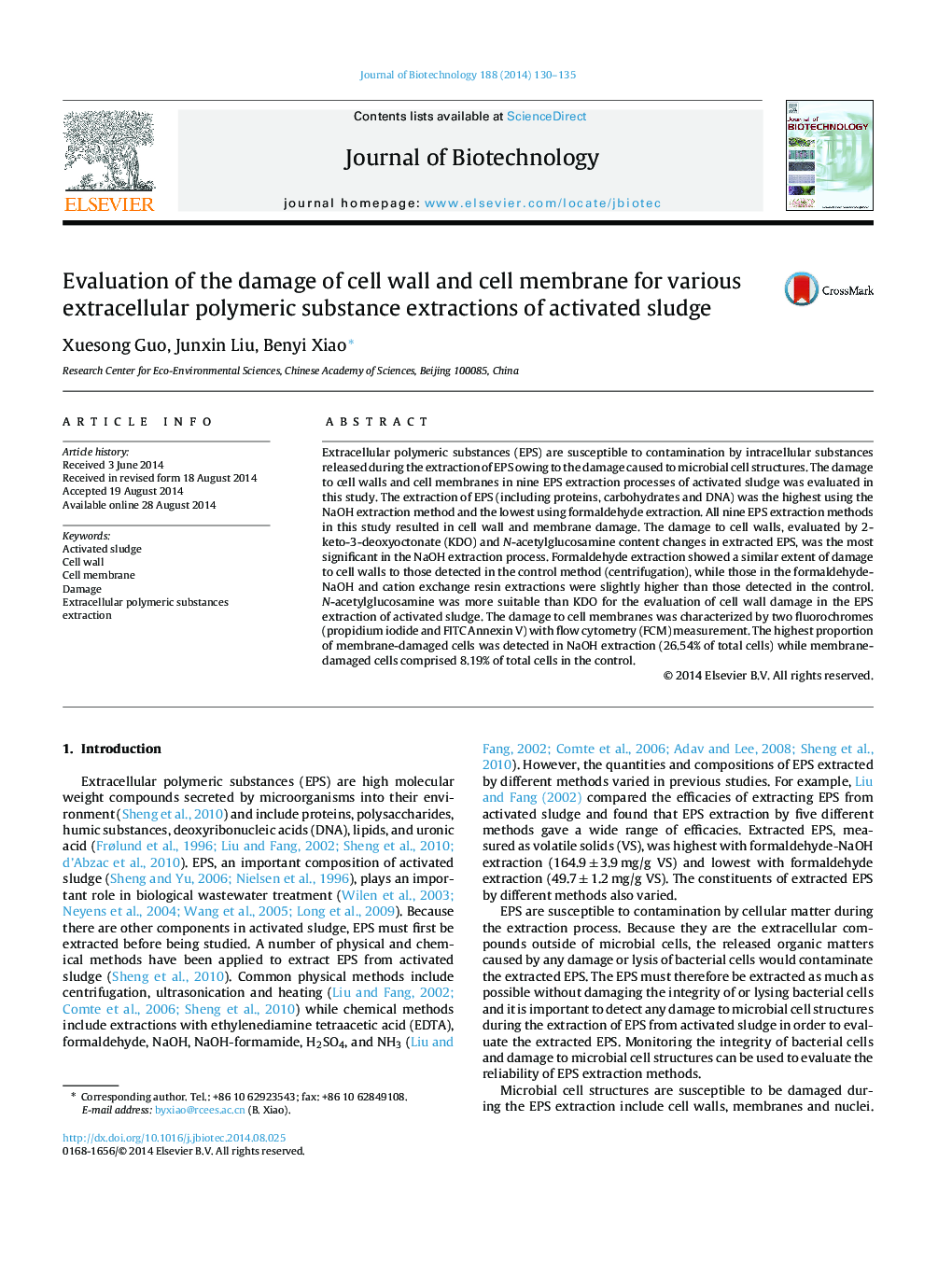| Article ID | Journal | Published Year | Pages | File Type |
|---|---|---|---|---|
| 6491437 | Journal of Biotechnology | 2014 | 6 Pages |
Abstract
Extracellular polymeric substances (EPS) are susceptible to contamination by intracellular substances released during the extraction of EPS owing to the damage caused to microbial cell structures. The damage to cell walls and cell membranes in nine EPS extraction processes of activated sludge was evaluated in this study. The extraction of EPS (including proteins, carbohydrates and DNA) was the highest using the NaOH extraction method and the lowest using formaldehyde extraction. All nine EPS extraction methods in this study resulted in cell wall and membrane damage. The damage to cell walls, evaluated by 2-keto-3-deoxyoctonate (KDO) and N-acetylglucosamine content changes in extracted EPS, was the most significant in the NaOH extraction process. Formaldehyde extraction showed a similar extent of damage to cell walls to those detected in the control method (centrifugation), while those in the formaldehyde-NaOH and cation exchange resin extractions were slightly higher than those detected in the control. N-acetylglucosamine was more suitable than KDO for the evaluation of cell wall damage in the EPS extraction of activated sludge. The damage to cell membranes was characterized by two fluorochromes (propidium iodide and FITC Annexin V) with flow cytometry (FCM) measurement. The highest proportion of membrane-damaged cells was detected in NaOH extraction (26.54% of total cells) while membrane-damaged cells comprised 8.19% of total cells in the control.
Related Topics
Physical Sciences and Engineering
Chemical Engineering
Bioengineering
Authors
Xuesong Guo, Junxin Liu, Benyi Xiao,
